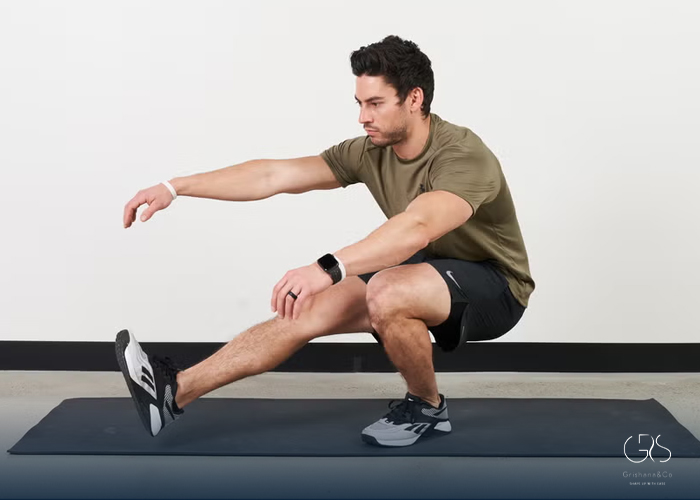Muscle strain is a common injury that occurs when the muscle fibers are stretched beyond their limit, leading to small tears in the muscle tissue. It can happen to anyone, but athletes and people who engage in physical activity are more prone to muscle strain. In this article, we will discuss how to deal with muscle strain, including prevention, diagnosis, treatment, and recovery.
Prevention of Muscle Strain
Prevention is the key to avoiding muscle strain. You can reduce the risk of muscle strain by taking the following precautions:
- Warm-up exercises: Before starting any physical activity, doing a proper warm-up is essential as it helps to loosen the muscles and prepare them for the activity. Warming up can include light jogging, jumping jacks, or stretching exercises.

- Stretching exercises: Stretching exercises help to improve flexibility and range of motion, reducing the risk of muscle strain. Incorporating stretching exercises into your daily routine can help keep your muscles healthy.
(I recommend reading my article about leg mobility exercises)

- Proper gear: Wearing proper gear such as supportive shoes, helmets, and padding can help prevent injuries. Sports equipment must also be well-maintained, properly fitted, and used correctly.
- Gradual progression: It is important to gradually increase the intensity and duration of physical activity, giving the muscles time to adjust and prevent overuse injuries such as muscle strain.
- Hydration: Adequate hydration is essential for muscle health. Dehydration can cause muscle cramps and strain, so drinking plenty of water before, during, and after physical activity can help prevent injuries.

Diagnosis of Muscle Strain
Muscle strain can be diagnosed based on the symptoms and physical examination. The doctor may ask you about the history of the injury and perform a physical examination to assess the extent of muscle damage. In some cases, imaging tests such as X-rays or MRI may be needed to rule out other possible injuries.
Symptoms of muscle strain include:
- Pain and stiffness in the affected muscle
- Swelling and bruising
- Weakness and difficulty in moving the muscle
- Muscle spasms
Treatment of Muscle Strain
The treatment of muscle strain depends on the severity of the injury. For mild to moderate muscle strains, the following therapies can be used:
- Rest: Resting the affected muscle can help alleviate pain and promote healing. Avoiding physical activity that exacerbates the pain is essential in the treatment of muscle strain.
- Ice: Applying ice to the affected muscle can help reduce pain, swelling, and inflammation. Ice can be applied for 20 minutes at a time, several times a day.
- Compression: Using compression bandages or wraps can help reduce swelling and provide support to the affected muscle.
- Elevation: Elevating the affected limb above the level of the heart can help reduce swelling and promote healing.
- Pain relief: Over-the-counter pain relievers such as acetaminophen or ibuprofen can help alleviate pain and reduce inflammation. Severe muscle strains may require prescription pain medication.
For severe muscle strains, surgery may be needed to repair the damaged muscle. However, surgery is not usually required for mild to moderate muscle strain.
Recovery from Muscle Strain
Recovery from muscle strain depends on the severity of the injury. Mild strains can heal within a few days, while severe strains may take several weeks or months to heal completely. The following tips can help speed up the recovery process:
- Physical therapy: Physical therapy can help improve range of motion, strength, and flexibility of the affected muscle. A physical therapist can design an exercise program that is tailored to your needs.
- Gradual return to physical activity: When the pain and swelling have subsided, gradually returning to physical activity can help improve muscle strength and prevent future injuries.
- Adequate nutrition: Eating a balanced diet that is rich in protein, vitamins, and minerals helps provide the body with the nutrients needed to repair the damaged muscle.
- Getting enough sleep: Getting sufficient sleep is essential for the body to heal and repair itself.
According to the American Academy of Orthopedic Surgeons (AAOS), the incidence rate of muscle strain is estimated to be between 10-50% of all sports injuries, depending on the sport, with soccer and football having the highest incidence rates.
Another study published in the Journal of Athletic Training found that muscle strains are most common in the lower extremities of athletes, with hamstring strains being the most common.
Muscle strain can be a debilitating injury that requires careful management and treatment. By taking the necessary precautions to prevent muscle strain, seeking prompt medical attention, and following a proper recovery plan, individuals can successfully manage muscle strain and prevent future injury.
Conclusion
Muscle strain is a common injury that can be prevented through various measures such as warm-up exercises, stretching, using proper gear, and gradually progressing in physical activity. Prompt diagnosis and appropriate treatment are crucial for effective healing. With rest, icing, compression, and elevation, mild to moderate muscle strains can heal within days to weeks. Severe strains may require surgery. Recovery involves physical therapy, gradual return to activity, proper nutrition, and adequate sleep. By following these guidelines, individuals can effectively manage muscle strain and reduce the risk of future injuries. Remember, prevention is key.
Sources
- Medical News Today, What to know about muscle strain
- National Library of Medicine, Calf muscle strain injuries in sport: a systematic review of risk factors for injury
- Healthline, Muscle Strains













